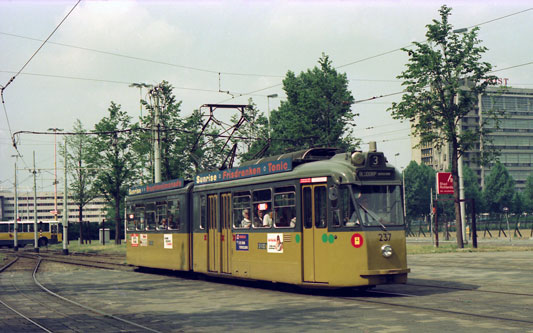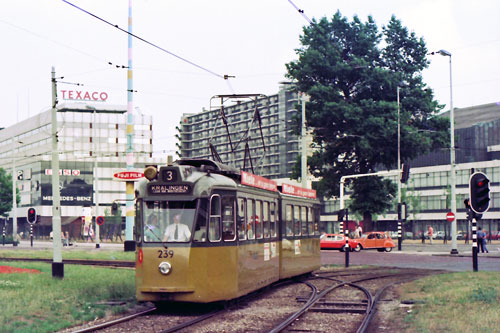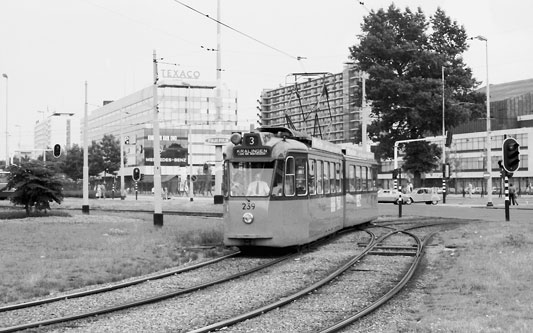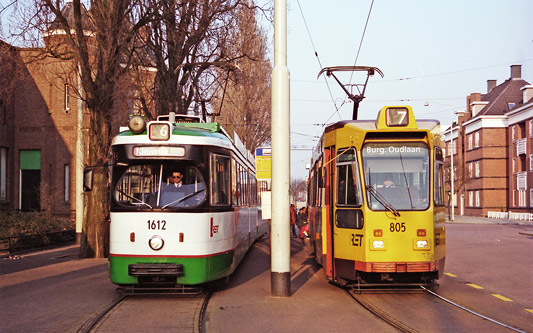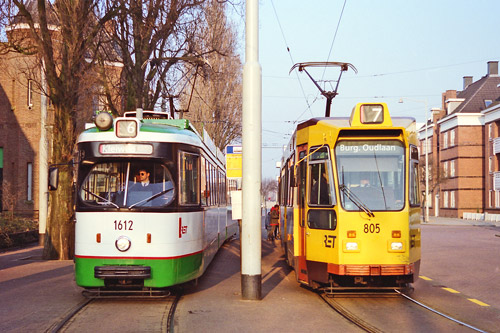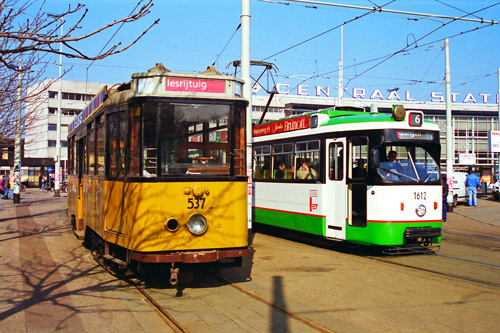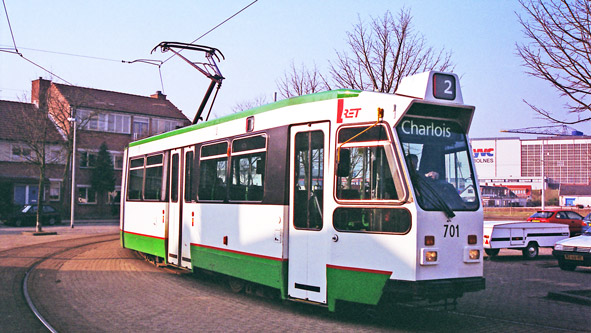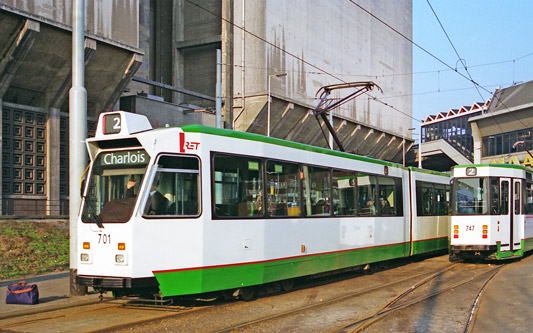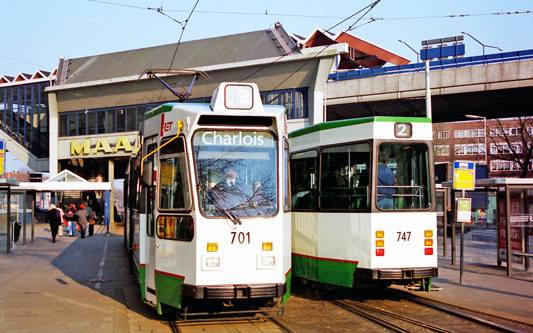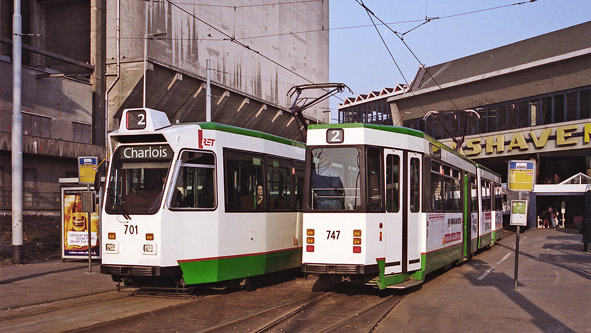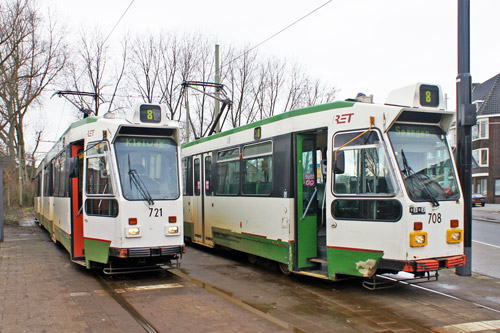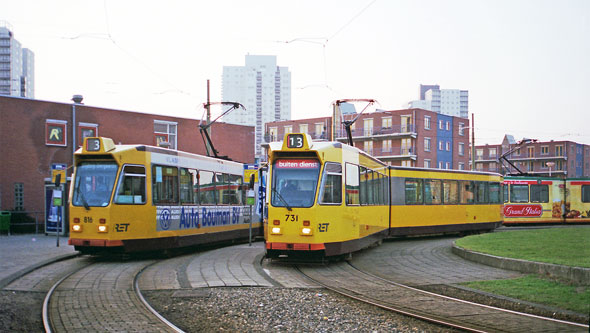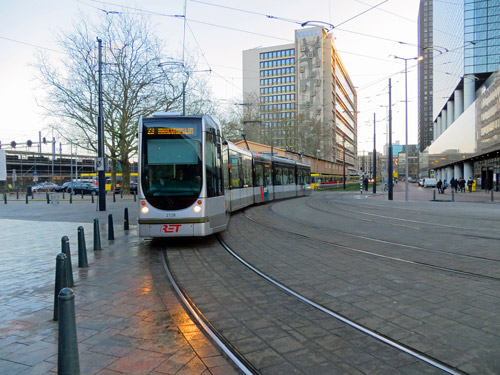In 1956-57 fifteen bogie cars (series 1-15) were acquired from Schindler of
Pratteln (Switzerland) based on the relatively low floor Basel design. They
were the first trams with seating for both the driver and conductor. However
for most of their life they were used with one-man operation. Only the
leading bogie of these single-ended trams was powered. Between 1982-86 the
small Schindlers were withdrawn. No.15 has been retained for museum
purposes.
The first articulated trams in Rotterdam were built by Schindler in 1957,
numbered 231-244. They were withdrawn between 1984/5. The first and
centre bogies had motors. On both this and the 1-15 series, the trailing
bogie (without motors) had wheels with a smaller diameter. The articulation
was a design by Urbinati which gave the cars lively riding characteristics.
242 has been kept for the museum.
Trams shown:
237
- 239
The Schindler trams were not particularly successful, and were followed by a
series of Düwag articulated trams.
Of the 60 trams delivered in 1964-65, 24 were 6-axle single articulated
(series 251-274) while 36 were 8-axle double articulated (series 351-386).
The type was a design by Düwag of Düsseldorf, but the front and centre
sections were constructed by Werkspoor of Utrecht. The rear sections were
built by Düwag. In 1975 251-274 received centre sections from Düwag and
became 301-324.
In May 1976 the 311, 360 & 362 were painted as "Pop" trams. Later the 301,
302, 319, 358, 359, 363 and 368 followed.
In 1968-69 another 35 6-axle articulated Düwag trams of the were acquired,
numbered 601-635. 24 of these later received centre sections from earlier
Düwag trams and they were renumbered in the 1601 series.
1600 Series trams illustrated are:
1612
-1613
In 1981-85, new trams 701-750 were acquired from Düwag. Their design was by
the RET and the centre bogies are not below the articulation, but at the
back of the front section. Originally the first axle of all bogies was
steered by a rod-system to reduce noise and wear; however this system proved
to be not reliable and all axles are fixed.
In 1984-88 the 801-850 were constructed using of the bogies and electrical
equipment of scrapped trams of the Düwag trams 301-324, 351-386 and 607+617.
They look similar to the 700-series trams but they are a bit shorter. Only
the centre and trailing bogies have motors.
700/800 Series trams illustrated are:
701 -
708 - 717 -
721 - 722 -
729 - 731 -
805 - 816 -
834
